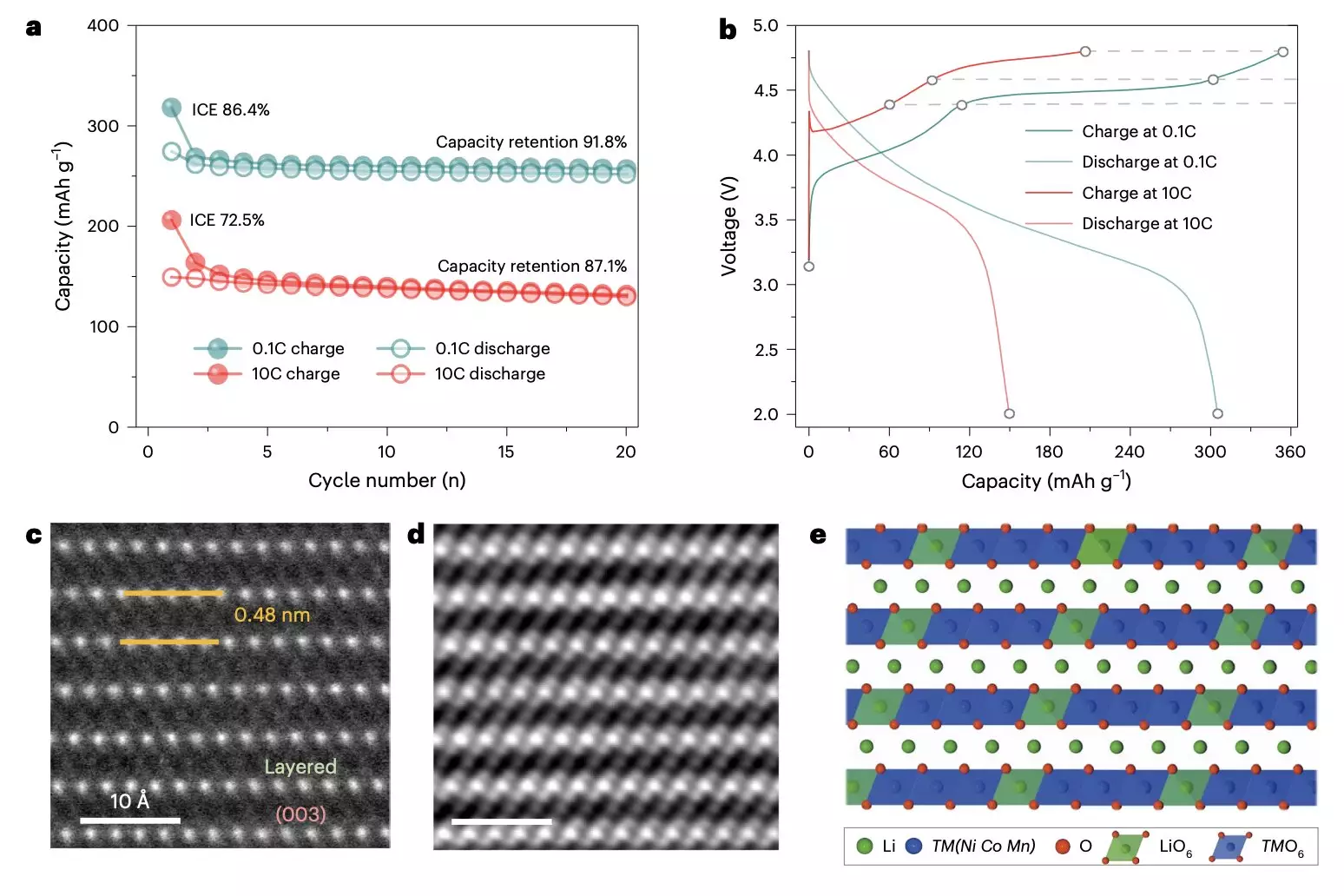The quest for superior battery technology has escalated as society becomes increasingly reliant on portable electronics and electric vehicles. Researchers are vigorously exploring innovative materials to enhance battery performance, with particular emphasis on extending lifespan, increasing energy density, and ensuring rapid charging and discharging capabilities. Among these advancements, layered lithium-rich transition metal oxides have emerged as significant candidates for battery cathodes, albeit with challenges related to their longevity and stability.
Layered lithium-rich transition metal oxides hold great promise due to their unique structure that allows lithium ions to traverse layers freely during battery operation. This facilitates higher energy storage and better efficiency. The presence of transition metals like manganese, cobalt, or nickel enriches these compounds, contributing to robust redox reactions essential for electron transfer—fundamental processes that form the backbone of energy production in batteries.
The innovative structure allows for the storage of greater amounts of lithium, which translates into enhanced energy capacity, particularly crucial in applications such as electric vehicles where weight and size are key considerations. However, despite their potential, these materials fall short regarding operational longevity, with batteries exhibiting rapid degradation and voltage loss over time.
The instability and quick deterioration of layered lithium-rich metal oxide cathodes have largely impeded their advancement to large-scale implementation. A recent study spearheaded by researchers from Sichuan University, the Southern University of Science and Technology in China, and a consortium of global institutions sought to untangle the layers of complexity surrounding this issue. Published insights in Nature Nanotechnology provide a deeper understanding of how these cathodes fail over time.
By integrating a series of morphological, structural, and oxidation state assessments from atomic to mesoscopic scales, researchers painted a comprehensive picture of failure mechanisms. Their meticulous investigation utilized advanced imaging techniques, such as energy-resolved transmission X-ray microscopy (TXM), allowing for ultra-high-resolution visualization of structural and chemical changes within the cathodes.
Through their experiments, the research team identified a multitude of oxygen defects and structural distortions that emerge during the initial charging cycle. These irregularities manifest during electrochemical activation and trigger a series of degradation phenomena, as detailed in their findings. This process initiates progressive phase transformations that lead to a phenomenon known as “nanovoid” formation—tiny voids within the material’s structure that undermine rigidity and performance.
Additionally, ultrafast lithium intercalation, characterized by rapid insertion and removal of lithium ions, exacerbates these issues. The resulting oxygen distortions manifest in significant lattice displacement, as transition metal ions dissolve and lithium site variations occur. These inhomogeneous structural shifts, combined with irreversible changes, culminate in diminished Coulombic efficiency and persistent particle cracks in subsequent cycles—key indicators of battery failure.
The findings from this study illuminate critical mechanisms underlying the degradation of layered lithium-rich cathodes and provide actionable insights for future battery development. Understanding the specific structural and chemical vulnerabilities that lead to performance degradation opens new avenues for innovation.
As researchers aim to refine the composition and structure of these cathodes, finding ways to mitigate oxygen defects and controlling rate-induced structural changes could revolutionize their practicality in advanced battery systems. By addressing these shortcomings, the path toward achieving next-generation batteries capable of delivering high performance, longevity, and reliability may soon be within reach.
With the necessity for improved battery materials becoming ever more pressing, understanding the intricacies of layered lithium-rich transition metal oxides is essential. As research progresses, the focus on resolving the issues surrounding cathode degradation will play a pivotal role in shaping the future of energy storage technologies. The lessons learned from this recent study not only highlight the challenges at hand but also inspire a wave of innovation that can potentially transform our approach to battery design and functionality.


Leave a Reply
You must be logged in to post a comment.